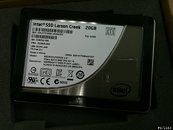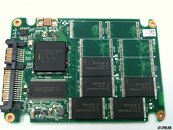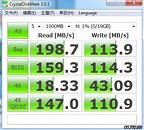- Joined
- Oct 9, 2007
- Messages
- 47,217 (7.55/day)
- Location
- Hyderabad, India
| System Name | RBMK-1000 |
|---|---|
| Processor | AMD Ryzen 7 5700G |
| Motherboard | ASUS ROG Strix B450-E Gaming |
| Cooling | DeepCool Gammax L240 V2 |
| Memory | 2x 8GB G.Skill Sniper X |
| Video Card(s) | Palit GeForce RTX 2080 SUPER GameRock |
| Storage | Western Digital Black NVMe 512GB |
| Display(s) | BenQ 1440p 60 Hz 27-inch |
| Case | Corsair Carbide 100R |
| Audio Device(s) | ASUS SupremeFX S1220A |
| Power Supply | Cooler Master MWE Gold 650W |
| Mouse | ASUS ROG Strix Impact |
| Keyboard | Gamdias Hermes E2 |
| Software | Windows 11 Pro |
Intel's much talked about "Larson Creek" 311 Series entry-level SATA solid state drive (SSD), which forms the foundation of Intel Smart Response technology was pictured and tested. The SSD comes in a standard-looking 2.5-inch shell resembling many other Intel SSD models. Unlike the more popular X25-M series, the 311 Series SSDs use 34 nm single-level cell (SLC) NAND flash memory, and comes in low capacities such as 20 GB. That's not even enough capacity to install the OS and important applications (which is barely possible on 40 GB SSDs), but that's not the purpose of the SSD. It assists hard drives, acting as a fast "cache", storing only the most important system and program files. Upon opening, one can see Intel-made controller and NAND flash chips. The 311 Series "Larson Creek" 20 GB SSD was put through a run of CrystalDiskMark, where it clocked transfer rates of nearly 199 MB/s sequential read, and 114 MB/s sequential write.



View at TechPowerUp Main Site



View at TechPowerUp Main Site




